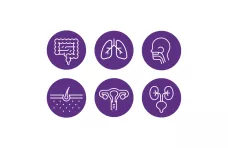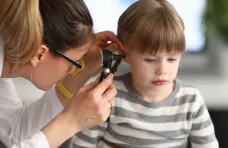China 2025: knowledge and behaviors about microbiota
The survey was conducted by Ipsos among 7,500 people in 11 countries (France, Portugal, Poland, Finland, Italy, Germany, United States, Mexico, Brazil China, and Vietnam).
The Chinese and microbiota: high microbiota awareness, trusted specialists, strong habits, and growing interest in testing
Summarizing China's results in the survey
In 2025, China stands out for its high microbiota awareness, trusted specialists, strong daily habits, and growing interest in testing—reflecting real momentum in public engagement.
1. Strong awareness of microbiota terms, yet gaps remain in depth
In 2025, 69% of Chinese respondents report having heard of the term “microbiota”, in line with the global average, though only 18% say they know exactly what it is—a figure stable compared to 2024 (-1 point vs. 2024). This suggests a broad but still surface-level understanding.

Traditional terms remain much more familiar than scientific ones: “gut flora” is recognized by 95%, and “vaginal flora” by 70%, versus only 63% for “gut microbiome” and 52% for “vaginal microbiome”.
Similarly, awareness of other microbiota is uneven—higher for oral (60%) and skin (50%), but still low for lung (45%), ENT (44%), and urinary (41%).
That said, China stands out for its very high awareness of microbiota-related solutions:
have heard of probiotics
(vs 92% overall)
have heard of prebiotics
(vs 79% overall)
of Chinese have heard of dysbiosis
(vs 33% overall)

Learn all about microbiota
Learn more
2. Consistent progress in microbiota-friendly habits
In 2025, 63% of Chinese respondents report adopting lifestyle changes to support their microbiota (+1 points vs 2024). and above the global average of 56%.

This reflects the widespread adoption of positive habits: 83% follow a balanced diet, 74% do not smoke, and 77% engage in regular physical activity.

Microbiota & sport: competitive micro-organisms
Find out more...In 2025, China remains en engaged country in the probiotic and prebiotic consumption with 68% consuming probiotics and 55% consuming prebiotics, significantly higher than global averages (49% and 41%).
However, only 36% report limiting their intake of processed foods, a behavior still under-adopted despite slight progress from last year (32%).

3. Trusted specialists lead microbiota education efforts
In China, healthcare professionals remain the most trusted source of microbiota information for 70% of respondents (+10 points vs 2024, 78% globally), even though 44% first encountered the term in the media and only 21% in a healthcare context.
Interestingly, trust also extends to teachers (12%) and family or friends (10%)—a more diversified picture than in other countries.
Healthcare professionals in China appear to take their educational role seriously
Compared to global averages, more Chinese respondents report having received information on key microbiota topics with a slight evolution vs last year:
- 52% were informed about its roles and functions (+1 point vs 2024)
- 55% received advice on healthy habits (+1 point vs 2024)
- 57% about the importance of maintaining balance (-1 point vs 2024)
- and 56% have been prescribed probiotics or prebiotics (-6 points vs 2024)

This information is primarily delivered by specialists (82%), particularly gastroenterologists (65%), followed by dermatologists (17%) and dentists (12%).
While still limited, 32% of respondents report having been warned about the impact of prescribed antibiotics on the microbiota—an improvement over 29% in 2024 and higher than the global average of 25%, showing growing awareness around this key issue.

Antibiotics: what impact on the microbiota and on our health?
Learn moreReceiving professional guidance has been shown to positively influence microbiota awareness and the adoption of good habits
People who have received multiple information on microbiota from healthcare professionals have a better understanding of the term microbiota (31% know exactly what it is, vs 17% among the Portuguese population). They are also more likely to have changed their behaviors to maintain a balanced microbiota (82%, vs 49% among all Portuguese population).

4. Rising awareness and interest in microbiota testing
In 2025, 47% of Chinese respondents have heard of microbiota testing, nearly double the global average of 27%. Awareness of this scientific tool is huge in this country. Interest in testing is widespread as well
would undergo testing themselves
(vs 61% overall)
would do so for scientific research
(vs 31% overall)
The focus is primarily on the gut microbiota (81%) and oral microbiota (51%), reflecting growing curiosity about different microbiome areas.
Chinese respondents also recognize multiple health applications:
- 64% see testing as a way to prevent disease
- 59% to support rebalancing efforts through lifestyle changes
- And 56% to identify risk factors—demonstrating a more advanced understanding than many global peers.
What is microbiota testing and mapping?
There are different types of microbiota testing, not only for the gut. Overall, they seek to identify microorganisms, such as bacteria and fungi, living in a specific part of the body to help inform health decisions and/or outcomes.
Intestinal microbiota testing, which seems to be the most common type of analysis, generally tests a person’s stool sample. For example, they could look for illness markers or extract DNA.
Both collective and individual gut microbiota analyses start with a stool sample. Microbiota mapping aggregates results from multiple microbiota tests to advance research and fight chronic diseases. Individual tests provide personal data on gut flora, with no definition of a clinically validated “healthy” or “pathological” microbiota. Thus, mapping fuels population-level knowledge, while testing gives a snapshot of one’s own microbiota.

Gut microbiota: still many things to be discovered
Find out more...
Methodology
This third edition of the International Microbiota Observatory was conducted by Ipsos on 7,500 individuals across 11 countries (France, Portugal, Poland, Finland, Italy, Germany, the USA, Brazil, Mexico, China, and Vietnam). Two new countries were included in this edition: Italy and Germany.
The survey was conducted over the Internet between January 21 and February 28, 2025. For each country, the sample is representative of the population aged 18 and over in terms of :
- gender
- age
- profession
- region
Representativeness was ensured via quota sampling, the most commonly used sampling method for obtaining a representative sample of the population studied. The quota variables for each country were gender, age, region, and socio-professional category. The data were adjusted:
- within each country, again to ensure that each population is representative
- globally, so that each country has the same weight. Statistical analyses were carried out using Cosi software (M.L.I., France, 1994), with a significance level of 95%
The survey population was 48% male and 52% female. The average age was 43.7 years. The sample of 7,500 individuals made it possible to carry out a detailed analysis by age group:
- 18-24
- 25-34
- 35-44
- 45-59
- 60 and over
Changes from one year to the next have been measured on a like-for-like basis, i.e. calculated taking into account only those countries present in both the first and second editions of the survey. While we do have results for the new countries included in this third edition (Germany and Italy), they have not been taken into account when calculating trends, since they were not included in the first two editions of the survey.
The questionnaire includes 16 questions on:
- socio-demographic data
- the level of knowledge about microbiomes
- the level of and desire for information from healthcare professionals
- the identification and adoption of behaviors designed to combat microbiome imbalances
- the level of knowledge, information, and behaviors of women about the vulvo-vaginal microbiome
- health data
The questionnaire lasted ten minutes and the 7,500 individuals had to complete the entire questionnaire in order to be included in the survey. The terms used in the questionnaire to talk about the microbiome have been translated and adapted to the terms used in each country.


